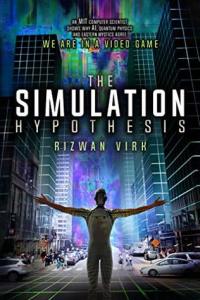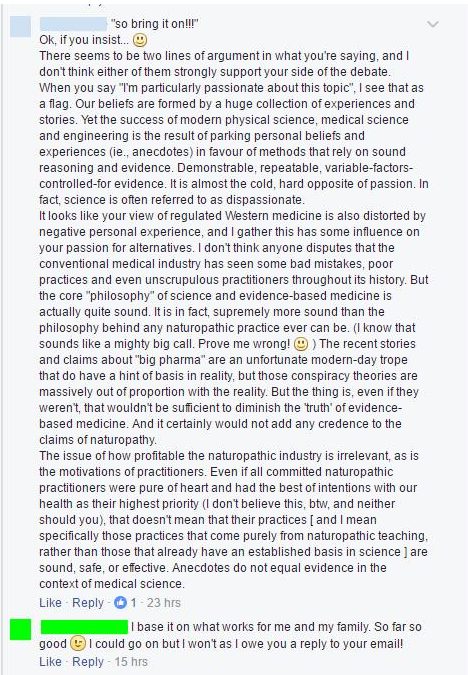2019; Bayview Books
An Analysis and Critique
Introduction
The idea that our consciousness is embedded within a sophisticated computer simulation, a la ‘The Matrix’ is, for me, a deeply intriguing philosophical notion. I committed to reading this book on the recommendation of Sam McRoberts (Twitter: @Sams_Antics), and although I’m less impressed by this material than he, I’m still glad I did.
Virk delves into principles of computer science, quantum mechanics, and primarily Eastern religious beliefs to draw the conclusion that our existence is embedded in a simulation run by higher order beings (or being, singular, perhaps). The coverage from these fields is quite comprehensive, in particular from the point of view of computer gaming as we know it. There are some gaps, however, as well as some flaws, and even at times some spectacular leaps of both faith and logic, and that’s why I can’t rate this above two stars.
Video Games and Science Fiction
There is much material on video games — their principles and features and how they work, which is to be expected given the author’s background. The section on the evolution of video games to simulations is compelling, and the idea that we might be in one ourselves has been around for some time, although made far more visible and popular by Elon Musk in 2016. The idea is simple: Given the depth and power that these tools (or toys) have increased over the past fifty years or so, and therefore the extrapolation of where they might be in the foreseeable future, then it seems not just possible but inevitable that computer simulations will match our reality in terms of detail and completeness. Hence, reality would be indistinguishable from a simulation and therefore we have the argument that our own reality is likely a simulation. Musk himself declared that the probability that we are not living in a simulation to be “one in billions”.
The argument is a good one, however, to me it feels like it might be fallacious, perhaps the result of a very human bias of the same kind that gives rise to the view that our universe was designed for us, given the arguments for the Anthropic Principle.
Throughout the book there is a lot of reliance on examples from sci-fi stories and movies as well as computer games to make some of the salient points, and these are interesting in their own right. Furthermore, where possible the author tries to support the ‘technical’ material with references to real-world state-of-art research and development. But sometimes the over- emphasis on the fictional world seems to be driving his agenda and conclusions, rather than merely providing inspiration for them. This is particularly evident in the section on downloadable consciousness — again, an interesting notion in its own right — however, there are no existing technologies that resemble those of the sci-fi worlds mentioned. Hence there is a leap from the untethered world of science fantasy to a very specific mechanism of the simulation hypothesis, almost as if it were an obvious conclusion.
Mysticism and Religious Beliefs
The arguments from Eastern mysticism — Hindu yogic teachings and Buddhism — that refer to higher order realities and reincarnation are thoroughly unconvincing. The argument is also extended to the Abrahamic religions, with particular reference to being judged before entering heaven. My own view on these is that given enough time and tolerance for any spiritual belief, eventually human religious traditions are bound to develop differing philosophies of reality, including beliefs that there are other ‘realities’ that lie beyond our reach. For this reason I found these sections tolerable, but neither persuasive nor necessary, and frankly I’d prefer this nonsense left out of serious discussion of the subject at large.
To labour this point, there is an important reminder here that merely considering we might be, or even believing that we are simulation-bound is itself an unremarkable idea. What really brings the concept to life is the exploration of compelling arguments for it. And superstitious beliefs offer none of these.
Part III of the book addresses specifically how Eastern mysticism has long referred to our existence in the “metaphor” of a dream. Metaphor is a good word choice, and this section raises some interesting historical reminders. But they are not at all persuasive arguments. What we have is a collection of metaphors only; comparative descriptions of similar ideas experienced by different peoples, with different contexts, over long periods of time. This may be good evidence of the reproducibility of human conceptions of metaphysical ideas, but it is not good evidence, or evidence at all, that we are in a simulation now.
As an example, ideas about consciousness are mentioned in several contexts, with the apparent underlying assumption that an individual’s consciousness is some kind of discrete entity that can, in principle at least, be migrated wholesale from our current body into some other milieu. This is an easy but lazy assumption to make and takes no account of the fact that our consciousness fluctuates throughout our daily life: Sleeping vs. awake, under the influence of drugs, as we are born and grow, and as we die. Stories about a yogi transferring his consciousness to a pigeon, and from there to a human cadaver, are interesting fragments of Hindu mythology. But modern science demonstrates clearly that our consciousness is not separable from the structure and chemistry of the brain within our head. ie., It makes little sense, outside the realms of mysticism (or science fantasy), to talk of consciousness as though it were some kind of object (or even ‘software’) that can be detached from the functioning, physical brain that defines it.
Furthermore, I found the section on karma and reincarnation simply bound to primitive superstitions and lacking in imagination or original thought. These notions are introduced again as metaphors for video game simulations, but it becomes clear that these concepts are how the author imagines our (simulated) reality really works.
Chapter 10 delves into mysteries such as UFOs, near-death experiences, and other pseudoscience and conspiracy-like theories, with the claim that these events are best explained by the simulation hypothesis. As a result, this is one of the most disappointing sections of the whole book. The author seems to fail to understand the nature of parsimony and Occam’s Razor, and seems to favour such reports as evidence for the simulation hypothesis, rather than more likely explanations, such as illusions, delusions, other cognitive biases, or fraud.
Quantum Mechanics
The weirdness of quantum mechanics is presented as a hint that we are experiencing the ‘edges’ of the simulated world. The classic thought experiment of Schrödinger’s Cat is used to illustrate ‘quantum weirdness’, although Virk fails to point out — perhaps because he fails to properly understand — that Schrödinger’s Cat was first devised to illustrate the absurdity of the Copenhagen interpretation of the observations of quantum mechanics. In the relevant sections of the book there is an attempt to relate this to video games through the notion of quantum indeterminacy (QI). Furthermore, his hypothesis is that the QI we observe in our world is a reflection of the fact that not all of our world is always ‘rendered’, but rather, remains as unrendered data until an observer (a conscious player character) needs to interact with it. In light of the apparent misunderstanding about Schrödinger’s criticism of the Copenhagen interpretation, this argument becomes interesting only in a Deepak Chopra – kind of way. ie., Not at all persuasive.
One example quote: “The best answer physicists have come up with is that consciousness somehow determines the collapse and that observation and/or measurement are part of the process.” No leading physicist in the field of quantum research would say that consciousness determining waveform collapse is the “best” answer.
The most popularly accepted alternative to the Copenhagen interpretation is the “Many Worlds” interpretation of quantum physics, and this is discussed in the context of time travel, again with some fictional examples given. However, time travel is mentioned here essentially as, that if the many-worlds scenario is true, then so is time travel. It’s a non-sequitur that the author may be attempting to smuggle in, or perhaps he really believes that one implies the other.
Leaving the notion of time travel, there is further discussion of simulated worlds being copied — multiplied and branched — in order to optimise for a best (lowest energy) future solution, and whether or not these branch copies are fully realized as separate simulations, or simply treated as data for optimisation computations that are not actually fully rendered.
Some of this discussion is genuinely compelling in its own right, except for two points:
- Our current universe doesn’t require a collection of Monte Carlo simulations in order to be ‘optimized’ for a lowest energy solution, because this is already built in to our existing laws of physics. The Second Law of Thermodynamics is a demonstrable feature of our reality, and it is part of classical physics, not quantum physics. And,
- The association of the branching/multiplying ‘hypothesis’ with the many-worlds interpretation in quantum physics seems to be nothing more than an analogy or a comparison. Again, there is no persuasive argument made that our quantum observations giving rise to many-worlds are a demonstration that there are multiple branching computations of our existence. It is little more than a vague comparison.
The following section on quantization of space and time as it applies in existing computer games and simulations is good, if not intuitive, or even obvious — the notion of Planck time is not new. However, there is one problem in the discussion of the speed of light (p 173), in which the author states, “Why would the fastest speed at which we can send information in the physical world be the same speed that we use for sending electromagnetic signals? This is an open question and one that points to the simulation hypothesis in and of itself.”
This is a circular argument that seems to assume those running us in their simulation have the same laws of physics that we do.
In addition, there is some reference to the fascinating work of Sylvester James Gates. This is tantalising material, but all too brief and superficial, and I was disappointed that this wasn’t explored more deeply. I feel it was a good opportunity lost.
Consciousness
Virk takes the position that a primary feature of a simulation hypothesis is that our consciousness (and therefore our ‘real’ body) is actually external to our world but hooked into it via some interface that therefore delivers the illusion of realness for the simulation in which we are embedded. An alternative view is the simulation argument of Nick Bostrom (presented mainly in chapter 4), which suggests that our consciousness itself is also fully simulated. This is the far more interesting version of the simulation hypothesis. However, Virk chooses not to engage with this option to any degree, preferring instead the view that we are ‘real’ people that are (apparently naively) hooked in to the simulation, interacting with both simulated NPCs and other real people, although we can’t tell the difference (since NPC behavior in the simulation is advanced enough to have passed the Turing test.)
To further emphasize the point, he again refers to religious mysticism:
“… our physical world is a kind of “illusion”, populated by conscious beings that exist outside the simulation. Bostrom didn’t seem to contemplate this possibility, since his argument implicitly suggests that most beings are simulated beings, but it may be one of the most intriguing aspects of the simulation hypothesis, bridging the gap between two domains of knowledge that rarely overlap, religion and science.”
What Virk seems to miss is that Bostrom’s view — that consciousness itself is a simulation — is the more parsimonious one. Invoking mechanisms of jacking in an external consciousness, or adding religious overtones to any form of simulation hypothesis, are actually adding unnecessary features and elaborations.
Additional Points and Conclusions
I was more sympathetic to the final section (Putting it All Together) which presents some interesting ideas even if a few of them are highly speculative, if not downright grasping at straws. But the concept of quantum entanglement providing for a potential error correction mechanism was certainly thought-provoking.
However, there is one major omission in Virk’s book that I find significant. Evolution, and other long-term world state changes, are features of many compelling computer games that are directly relevant to the simulation hypothesis. While Virk’s subject matter knowledge on the history of simulation game developments is obviously very deep and comprehensive, this important part of the genre (or indeed, genre in its own right) is all but neglected and the story is much weaker as a result.
Furthermore, and following the point that Virk clearly favours the ‘consciousness is downloaded’ position (in contrast to Bostrum’s ‘consciousness is simulated’ view), another major objection is ignored. That is, if our consciousness is downloaded, then our contemporary knowledge that all current life (including us, obviously) is the product of an evolutionary process over deep time becomes all but pointless. The only reason our creators would have for providing the existing evidence for deep time and evolution is to deceive us into merely thinking that our existence is part of a temporal chain that is billions of years long. This is equivalent to creationist thinking and fails the most basic tests of logic.
At this point I should pause, and re-state that I have no problem with the fundamentals of the simulation hypothesis. The idea holds a sincere fascination for me, and while I do think it is still somewhat of a fringe notion at large, the most vocal proponents of it are not necessarily crackpots. I do fear, however, that the more time, or pages, or column inches, are spent on religious, mystical, or other intellectually parochial interpretations, the more it will remain and be viewed as a fringe ‘cult’, like the flat earthers or other nonsensical conspiracy theorists. For this reason Virk’s thesis is less of an illumination and more of a good opportunity lost.













